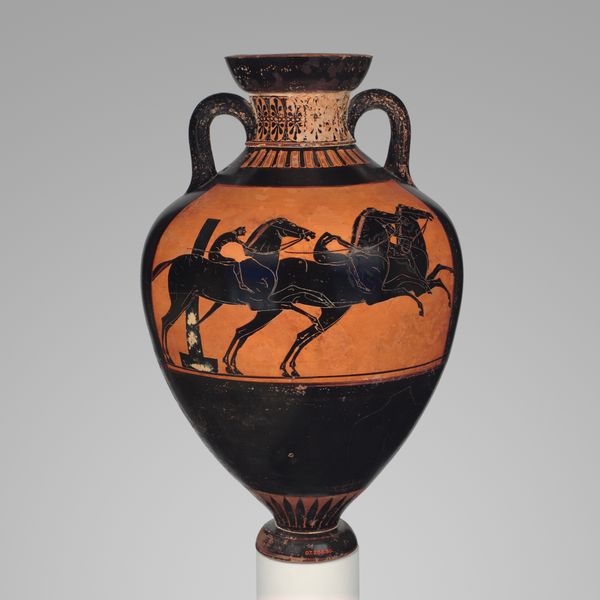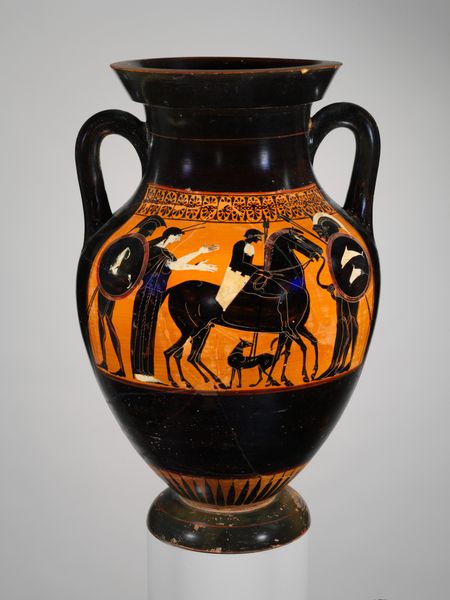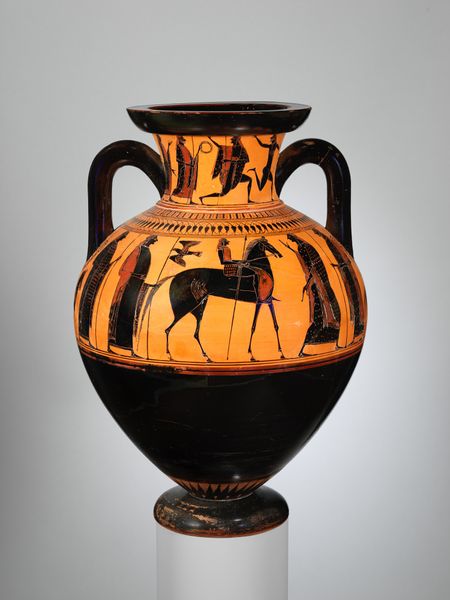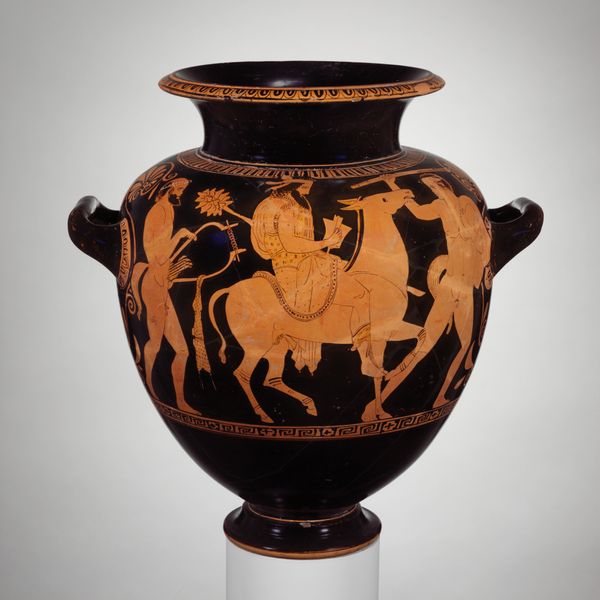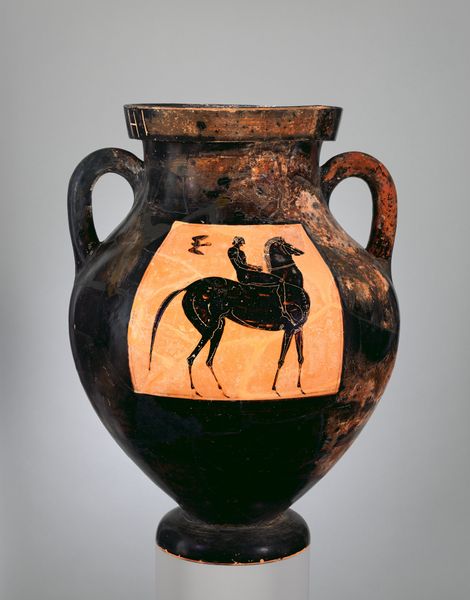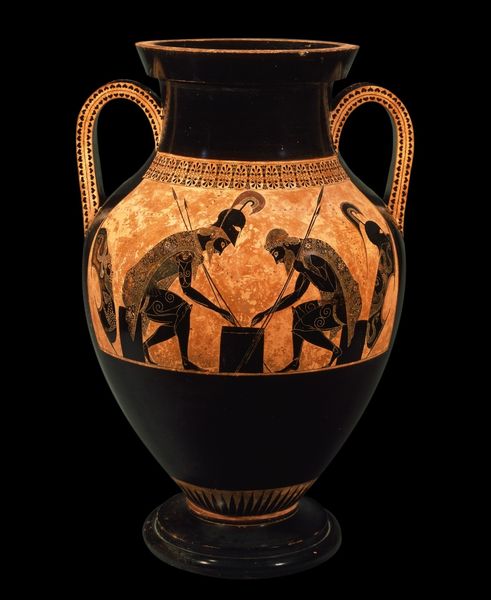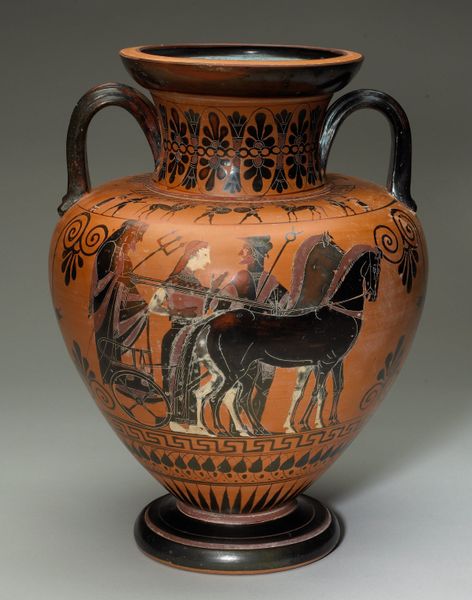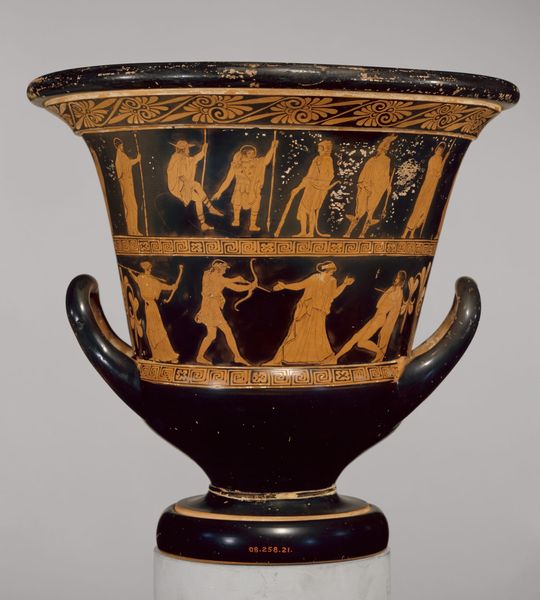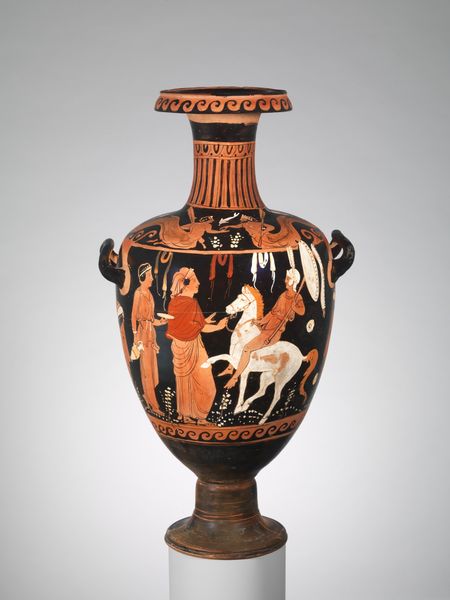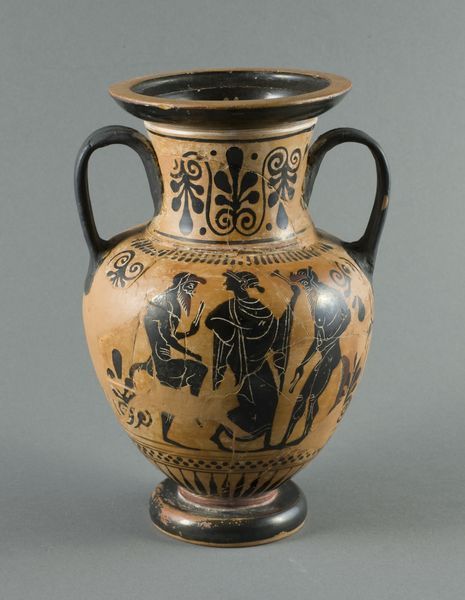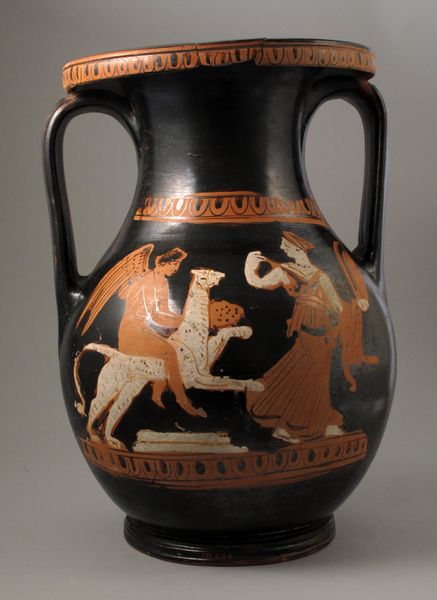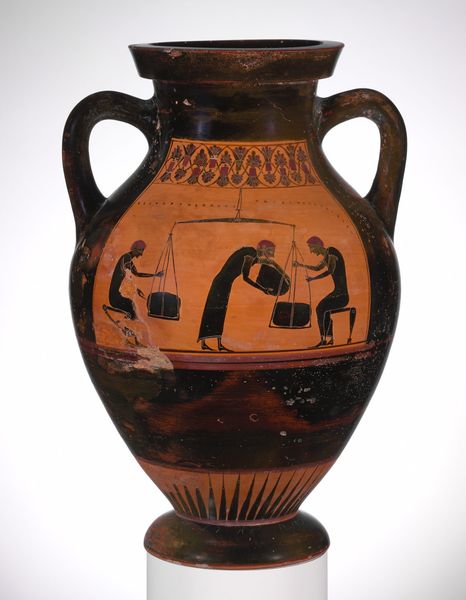
painting, ceramic, earthenware
#
narrative-art
#
pottery
#
painting
#
greek-and-roman-art
#
ceramic
#
figuration
#
earthenware
#
ancient-mediterranean
#
ceramic
#
earthenware
Dimensions: H. 10 3/8 in. (26.4 cm)
Copyright: Public Domain
Editor: Here we have a terracotta amphora, dating back to around 540 BC. It's currently housed at the Metropolitan Museum of Art, and is attributed to Andokides. It feels very vibrant and alive, even after all this time. Tell me, what strikes you most about this piece? Curator: You know, what grabs me is how such simple materials can tell such vivid stories. Imagine, someone carefully mixing clay, shaping this vessel, then so meticulously painting this scene. And then that painter innovating the use of a different kind of slip. This piece whispers about the beginnings of red-figure painting. See how the artist captures the power of the horses pulling the chariot, or are they just in preparation for an easy trot around the hippodrome? It's pure theatre! And have you noticed that other smaller chariot on the other side, could this depict preparation for the games? Editor: I do notice the chariot, but preparation for the games wasn't what I was focused on, to be honest! I hadn't even thought about what was actually inside the amphora. How would it have been used? Curator: Well, these amphorae were basically the Tupperware of the ancient world. I mean, you could store wine, olive oil, grains...even, water. Editor: So, what do you take away from this artist's narrative? Curator: I wonder if this piece maybe reminds us how the everyday could still be sacred, you know? Like, grabbing lunch could be an epic quest worthy of being immortalised. Or, you know, maybe they just needed a really fancy water jug! Editor: It definitely puts my plastic water bottle to shame. Thanks for sharing your insight! Curator: My pleasure, who knew Tupperware could be so inspiring!
Comments
No comments
Be the first to comment and join the conversation on the ultimate creative platform.
